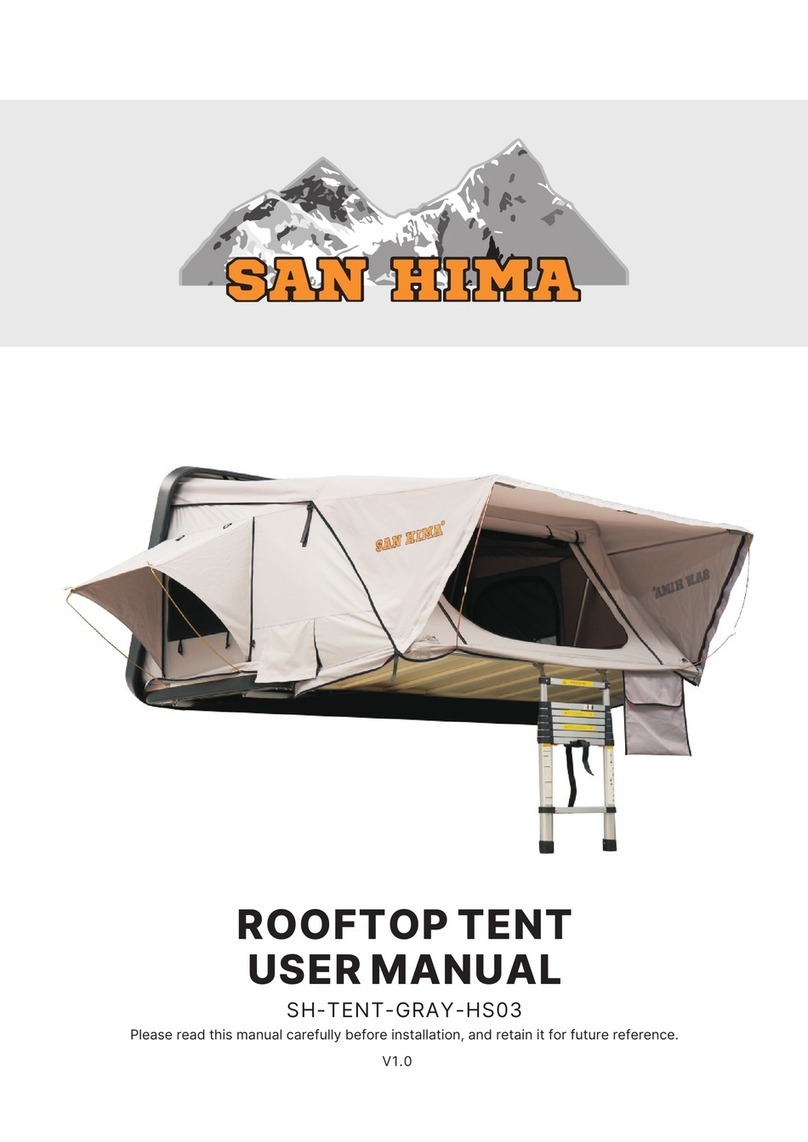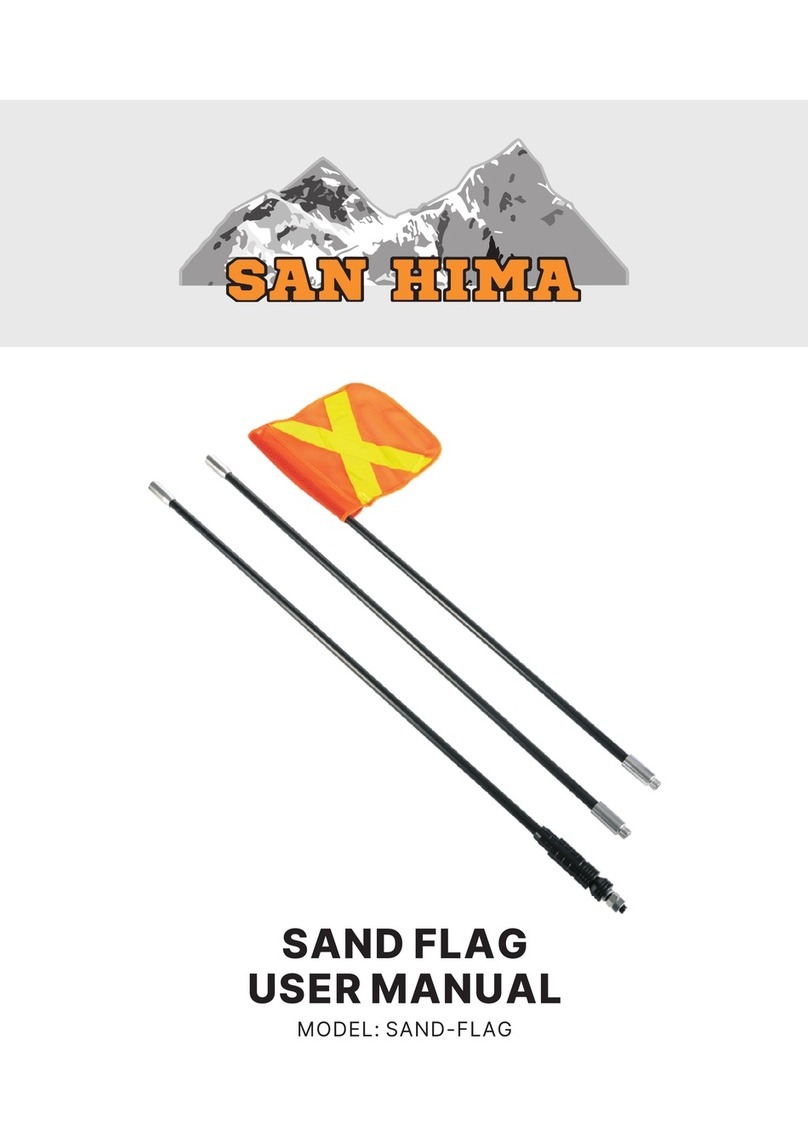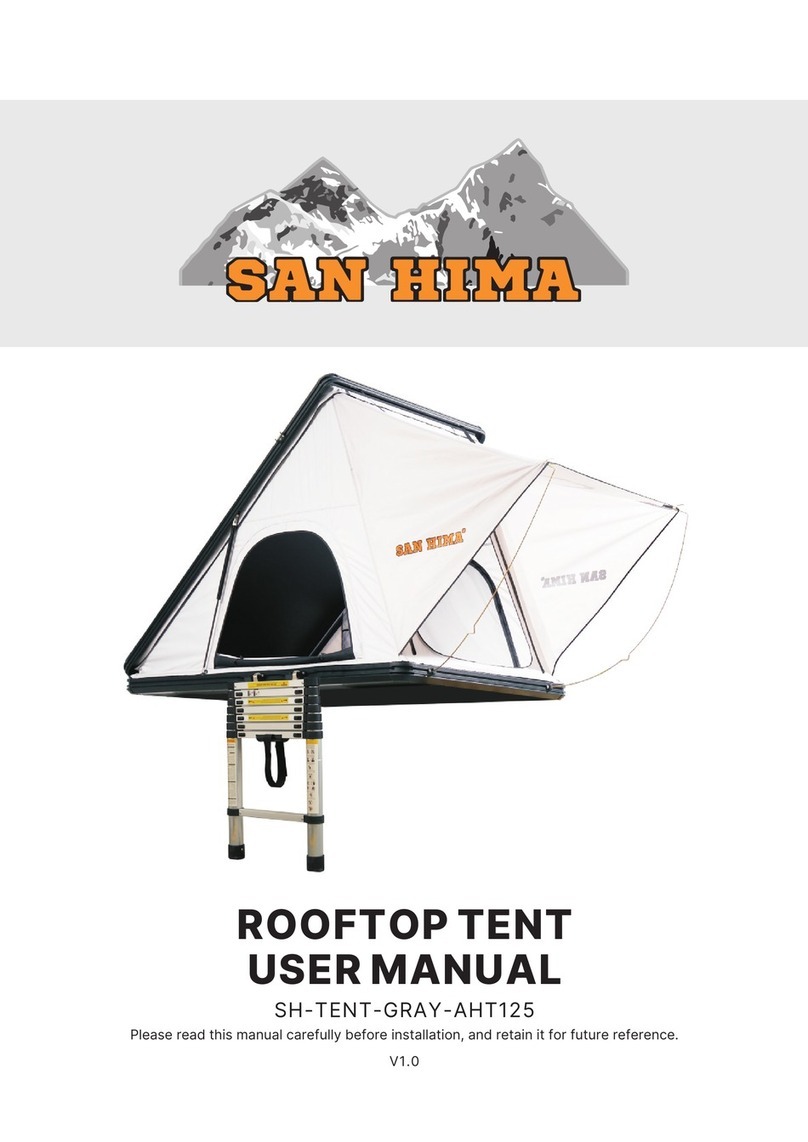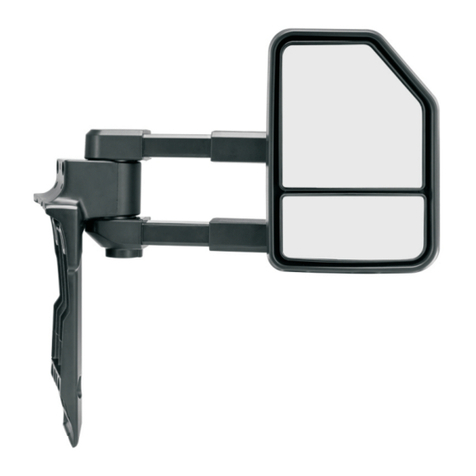
SAFETY WARNINGS AND INSTRUCTIONS
Read and understand all safety warnings and instructions. Failure to follow the warnings and
instructions may result in serious injury or death. Save all warnings and instructions for future
reference.
WORK AREA
Keep work area clean, free of clutter and well lit. Cluttered and dark work areas can cause
accidents.
Keep children and bystanders away while assembling the rack. Distractions can cause you to
lose control, so visitors should remain at a safe distance from the work area.
Be aware of all power lines, electrical circuits, water pipes and other mechanical hazards in your
work area, particularly those hazards below the work surface hidden from the operator's view
that may be unintentionally contacted and may cause personal harm or property damage.
RACK USE
Carrying any load can be hazardous. All loads must be tied down securely to the rack to prevent
them from vibrating or sliding forward, backward, laterally or being blown off or broken by
unexpected wind or road hazards such as potholes.
Check each time you install the rack, load the rack, as well as daily to ensure that all connections
are tight. Periodically check welds for cracking caused by metal fatigue.
When transporting any load, the speed of the vehicle must take into account all conditions such
as the state of the road, the surface of the road, traffic conditions, wind, etc. Vehicle handling,
cornering, braking and sensitivity to side winds will change with the addition of loads.
Never exceed the maximum load capacity of 80kg.
The maximum load capacity is 160kg when coupled with roof rack.
Note that the load cannot exceed the downward force rating of the tow bar.
This rack is designed to carry ladders, deck boards, piping, rebar, sports equipment and other
long objects. Do not modify the rack and do not use the rack for purposes that it is not designed
for.
Never load people or animals onto the rack.
Avoid roll over by ensuring that loads are not top-heavy. High loads must be transported with
GREAT CAUTION to prevent loads from striking low overhead objects or tipping during turns,
abrupt stops, or high winds.
Load should not substantially extend beyond the loading surface of the rack. Check local
regulations before using this product.
Load shall be uniformly distributed with the lowest possible center of gravity.
Make sure the vehicle's engine is OFF, with parking brake set, before setting up, loading or
unloading the rack.
For reasons of fuel economy and the safety of other road users, the rack should be removed
when not in use.
2


































